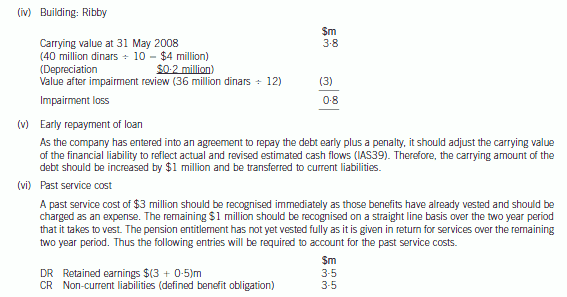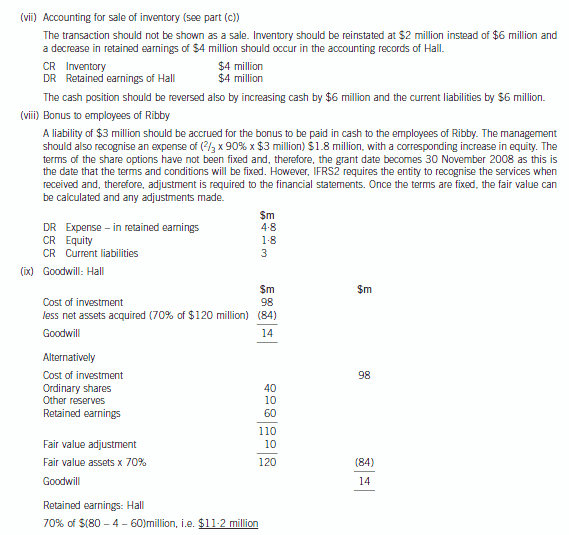ACCA考试的难度分几个部分?
发布时间:2022-03-03
ACCA考试的难度是以英国大学学位考试的难度为准,考试主要分为三个部分:主要是F阶段以及P阶段和核心科目SBL以及SBR的难度划分,每个部分的难度不同,下面就带大家一起来看看吧。
第一部分(AB-FA)、每门考试只是测试本门课程所包含的知识,着重于为后两个部分中实务性的课程所要运用的理论和技能打下基础。第二部分(LW-FM)的难度分别相当于学士学位高年级课程的考试,考试除了本门课程的内容之外,还会考到第一部分的一些知识,着重培养考生的分析能力,第三部分p阶段的考试相当于硕士学位最后阶段的考试,考试要求考生综合运用学到的知识、技能和决断力。不仅会考到以前的课程内容,还会考到其他相关科目的内容。
ACCA考试难度:F阶段
F阶段主要包括:F1 会计师与企业 Accountant in Business (AB) 、F2 管理会计 Management Accounting (MA) 、F3 财务会计 Financial Accounting (FA) 、F4 公司法与商法 Corporate and Business Law (CL) 、F5 业绩管理 Performance Management (PM) 、F6 税务 Taxation (TX) 、F7 财务报告 Financial Reporting (FR) 、F8 审计与认证业务 Audit and Assurance (AA) F9 财务管理 Financial Management (FM) ,如果你取得会计专业学士学位,是可以免试F1-F5的,CICPA全科通过可以免试F1-F4以及F6。所以你一共可以免试F1-F6前六门。
ACCA考试难度:P阶段
P1 专业会计师 Professional Accountant (PA) 、P2 公司报告 Corporate Reporting (CR) 、P3 商务分析 Business Analysis (BA) 、P4 高级财务管理 Advanced Financial Management (AFM) 、P5 高级业绩管理 Advanced Performance Management (APM) 、P6 高级税务 Advanced Taxation (ATX) 、P7 高级审计与认证业务 Advanced Audit and Assurance (AAA),P阶段的课程更深入更专业而且很多都要靠自己去分析领悟,根据实际情况具体分析,要有非常专业的判断分析能力,所以在考P阶段的课程时你得多花点时间,ACCA从F4开始的考试都是全主观题,根据答的要点得分,很多都是要靠自己分析理解得出。
ACCA考试难度:SBR&SBL
acca sbL和abr这两门是有一定难度的,比F阶段的科目难度都上了一个台阶,需要大家更加用心耐心的去对待。
以上就是今天51题库考试学习网为大家带来的ACCA考试相关的内容。相信大家只要用心备考,一直坚持下去,都能够取得一个好的成绩!
下面小编为大家准备了 ACCA考试 的相关考题,供大家学习参考。
(b) Prepare a consolidated statement of financial position of the Ribby Group at 31 May 2008 in accordance
with International Financial Reporting Standards. (35 marks)








(b) What styles of managing change would you recommend John use to bring about the desired change?
(8 marks)
(b) Choosing the right combination of styles to manage the desired change will be an interesting challenge to John as the principal
change agent. Education and communication will be vital in getting the police officers to buy in to the need for change. It is
only by changing their perception of the nature and size of the city centre problem that any change in activity will be possible.
Communication will also be important to keep the other stakeholders informed and on board – in this case the mayor is likely
to be a key player.
Having convinced the police officers of the need for and achievability of the change John has then to motivate them to become
involved. This is achieved through collaboration and participation. John will determine the extent to which officers or task
groups are involved in various parts in the change process. Here the emphasis is on getting a shared ownership of the problem
and getting better solutions to parts of the problem. As with education and communication this may be a time-consuming
process.
Intervention by John may be needed at various points in the change process; he may delegate certain activities to others but
retain the coordination and control of the project. On occasions it may be necessary for John to take direct control over the
process in order to clarify and speed-up the whole process but such direction may cause a lack of acceptance and a poorly
conceived strategy. Finally, in times of crisis resort may have to be made to coercion/edict. This is likely to be the leastsuccessful means of managing change and should only be used when exceptional circumstances are present.
(b) Both divisions have recognised the need for a strategic alliance to help them achieve a successful entry into
European markets.
Critically evaluate the advantages and disadvantages of the divisions using strategic alliances to develop their
respective businesses in Europe. (15 marks)
(b) Johnson, Scholes and Whittington define a strategic alliance as ‘where two or more organisations share resources and
activities to pursue a strategy’. There are a number of types of alliance ranging from a formal joint venture through to networks
where there is collaboration but no formal agreement. The type of strategic alliance will be affected by how quickly market
conditions are changing – swift rates of change may require flexible less formal types of alliance and determine whether
specific dedicated resources are required or whether the partners can use existing resources. Johnson, Scholes and
Whittington argue that for an alliance to be successful there needs to be a clear strategic purpose and senior management
support; compatibility between the partners at all levels – this may be complicated if it is a cross-border alliance; time spent
defining and meeting performance expectations including clear goals, governance and organisational arrangements; and
finally trust both in terms of respective competences and trustworthiness.
6D–ENGAA
Paper 3.5
6D–ENGAA
Paper 3.5
The advantages that may be gained by a successful strategic alliance include creating a joint operation that has a ‘critical
mass’ that may lead to lower costs or an improved offer to the customer. It may also allow each partner to specialise in areas
where they have a particular advantage or competence. Interestingly, alliances are often entered into where a company is
seeking to enter new geographical markets, as is the case with both divisions. The partner brings local knowledge and
expertise in distribution, marketing and customer support. A good strategic alliance will also enable the partners to learn from
one another and develop competences that may be used in other markets. Often firms looking to develop an e-business will
use an alliance with a partner with experience in website development. Once its e-business is up and running a firm may
eventually decide to bring the website design skills in-house and acquire the partner.
Disadvantages of alliances range from over-dependence on the partner, not developing own core competences and a tendency
for them not to have a defined end date. Clearly there is a real danger of the partner eventually becoming a competitor.
In assessing the suitability for each division in using a strategic alliance to enter European markets one clearly has to analyse
the very different positions of the divisions in terms of what they can offer a potential partner. The earlier analysis suggests
that the Shirtmaster division may have the greater difficulty in attracting a partner. One may seriously question the feasibility
of using the Shirtmaster brand in Europe and the competences the division has in terms of manufacturing and selling to large
numbers of small independent UK clothing retailers would seem inappropriate to potential European partners. Ironically, if
the management consultant recommends that the Shirtmaster division sources some or all of its shirts from low cost
manufacturers in Europe this may provide a reason for setting up an alliance with such a manufacturer.
The prospects of developing a strategic alliance in the Corporate Clothing division are much more favourable. The division
has developed a value added service for its corporate customers, indeed its relationship with its customers can be seen as a
relatively informal network or alliance and there seems every chance this could be replicated with large corporate customers
in Europe. Equally, there may be European workwear companies looking to grow and develop who would welcome sharingthe Corporate Clothing division’s expertise.
(b) Describe the audit work to be performed in respect of the carrying amount of the following items in the
balance sheet of GVF as at 30 September 2005:
(i) goat herd; (4 marks)
(b) Audit work on carrying amounts
Tutorial note: This part concerns audit work to be undertaken in respect of non-current tangible assets (the production
animals in the goat herd and certain equipment) and inventories (the for-sale animals and cheese). One of the ‘tests’ for
assessing whether or not a point is worthy of a mark will be whether or not the asset to which it relates is apparent. Points
which are so vague that they could apply to ANY non-current asset for ANY entity, rather than those of GVF are unlikely to
attract many marks, if any, at this level.
(i) Goat herd
■ Physical inspection of the number and condition of animals in the herd and confirming, on a test basis, that they
are tagged (or otherwise ‘branded’ as being owned by GVF).
■ Tests of controls on management’s system of identifying and distinguishing held-for-sale animals (inventory) from
the production herd (depreciable non-current assets).
■ Comparison of GVF’s depreciation policies (including useful lives, depreciation methods and residual values) with
those used by other farming entities.
■ ‘Proof in total’, or other reasonableness check, of the depreciation charge for the herd for the year.
■ Observing test counts or total counts of animals held for sale.
■ Comparing carrying amounts of the kids, according to their weight and age, as at 30 September 2005 with their
market values. (These may approximate to actual invoiced selling prices obtained by GVF.)
Tutorial note: Market value of the production herd could also be compared with its carrying amount to assess possible
impairment. However, if value in use appears to be less than market value the herd should be sold rather than used
for production.
声明:本文内容由互联网用户自发贡献自行上传,本网站不拥有所有权,未作人工编辑处理,也不承担相关法律责任。如果您发现有涉嫌版权的内容,欢迎发送邮件至:contact@51tk.com 进行举报,并提供相关证据,工作人员会在5个工作日内联系你,一经查实,本站将立刻删除涉嫌侵权内容。
- 2020-04-18
- 2020-03-08
- 2020-01-10
- 2020-04-16
- 2020-04-23
- 2020-03-11
- 2020-01-09
- 2020-01-10
- 2021-05-08
- 2020-02-05
- 2020-01-10
- 2020-04-29
- 2020-01-10
- 2021-10-15
- 2020-01-10
- 2020-02-28
- 2020-01-10
- 2020-01-10
- 2020-01-10
- 2020-01-13
- 2020-03-12
- 2020-01-01
- 2020-01-09
- 2020-01-10
- 2020-03-27
- 2020-01-09
- 2020-04-02
- 2019-07-20
- 2020-01-10
- 2020-05-14